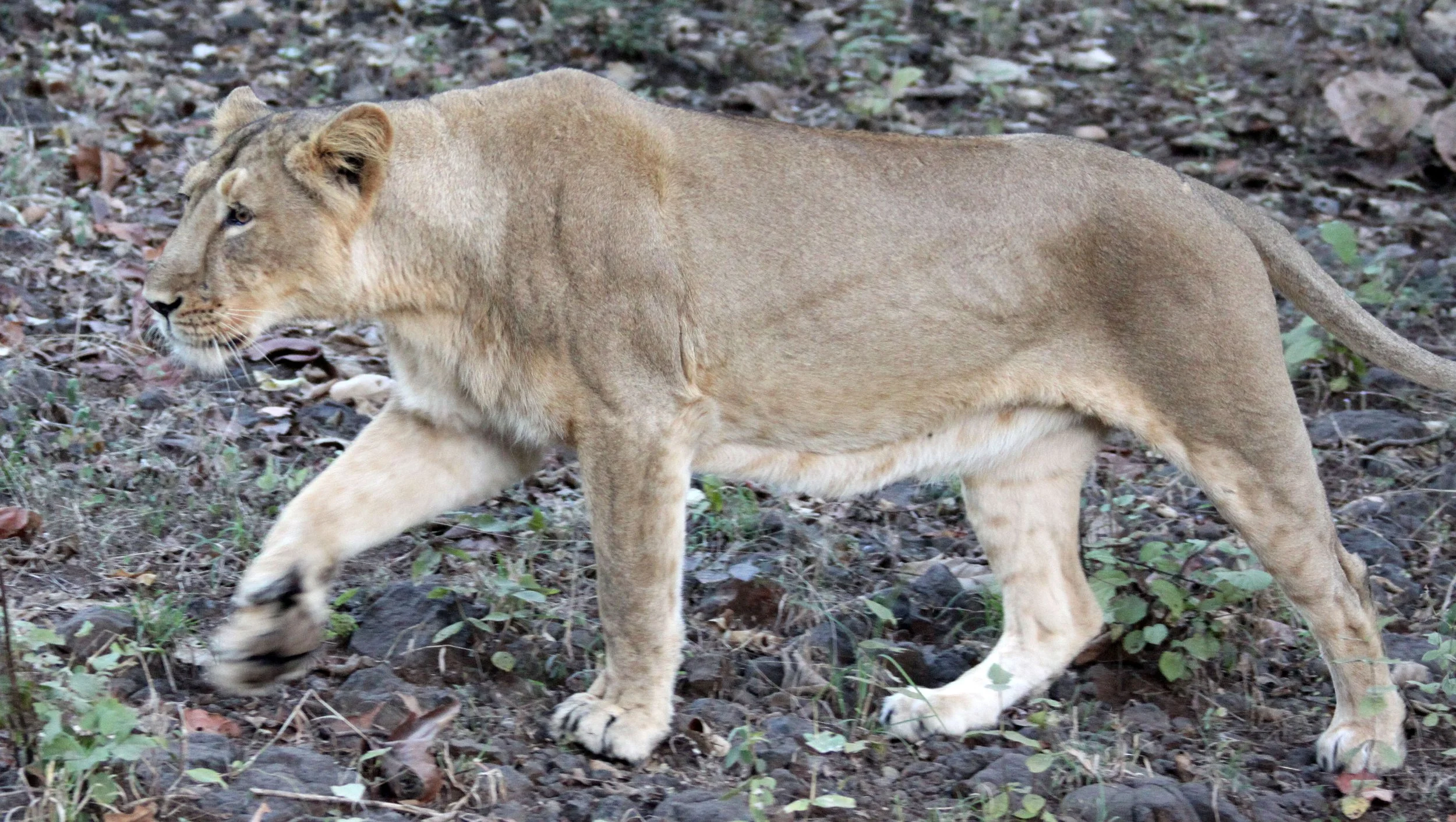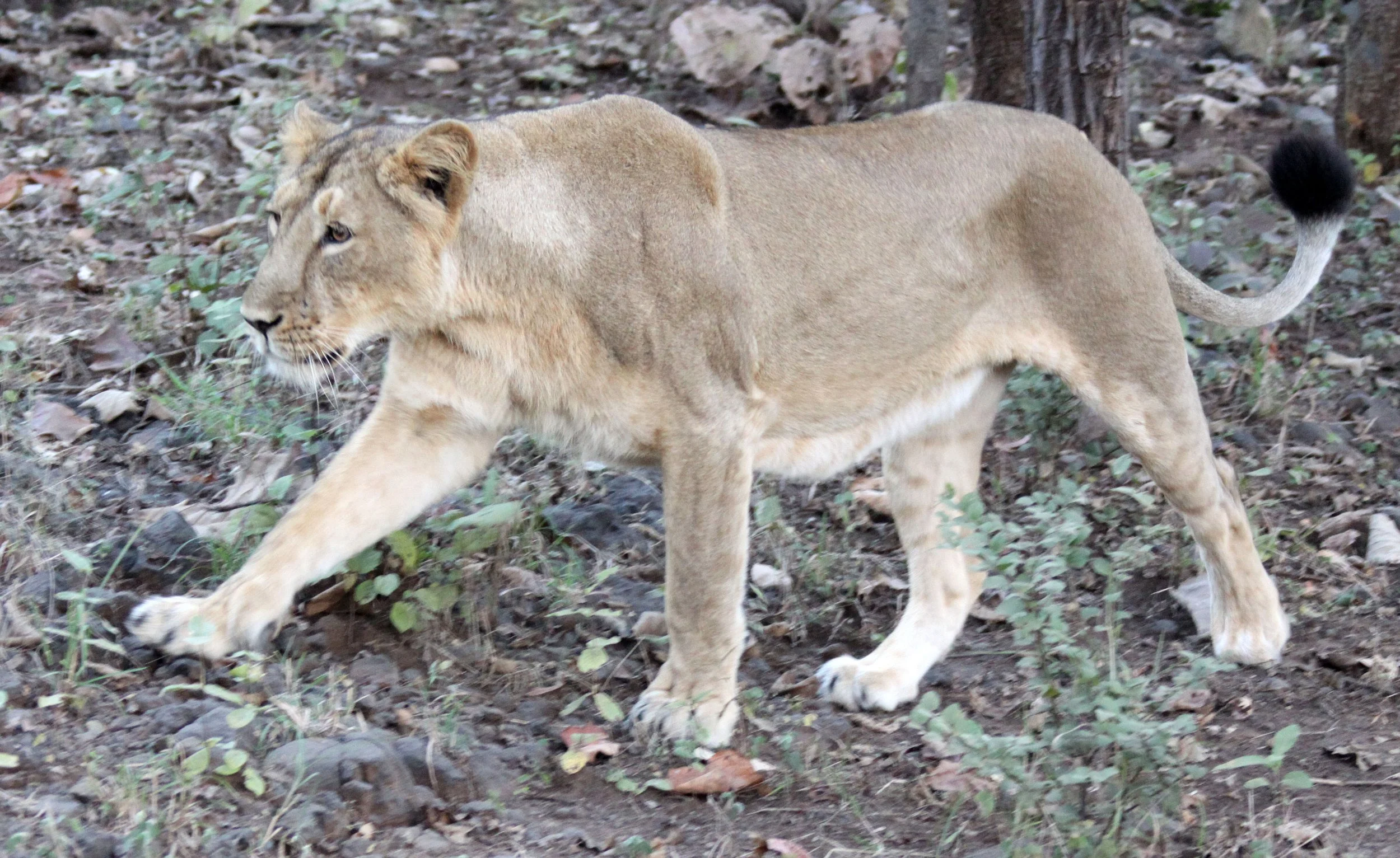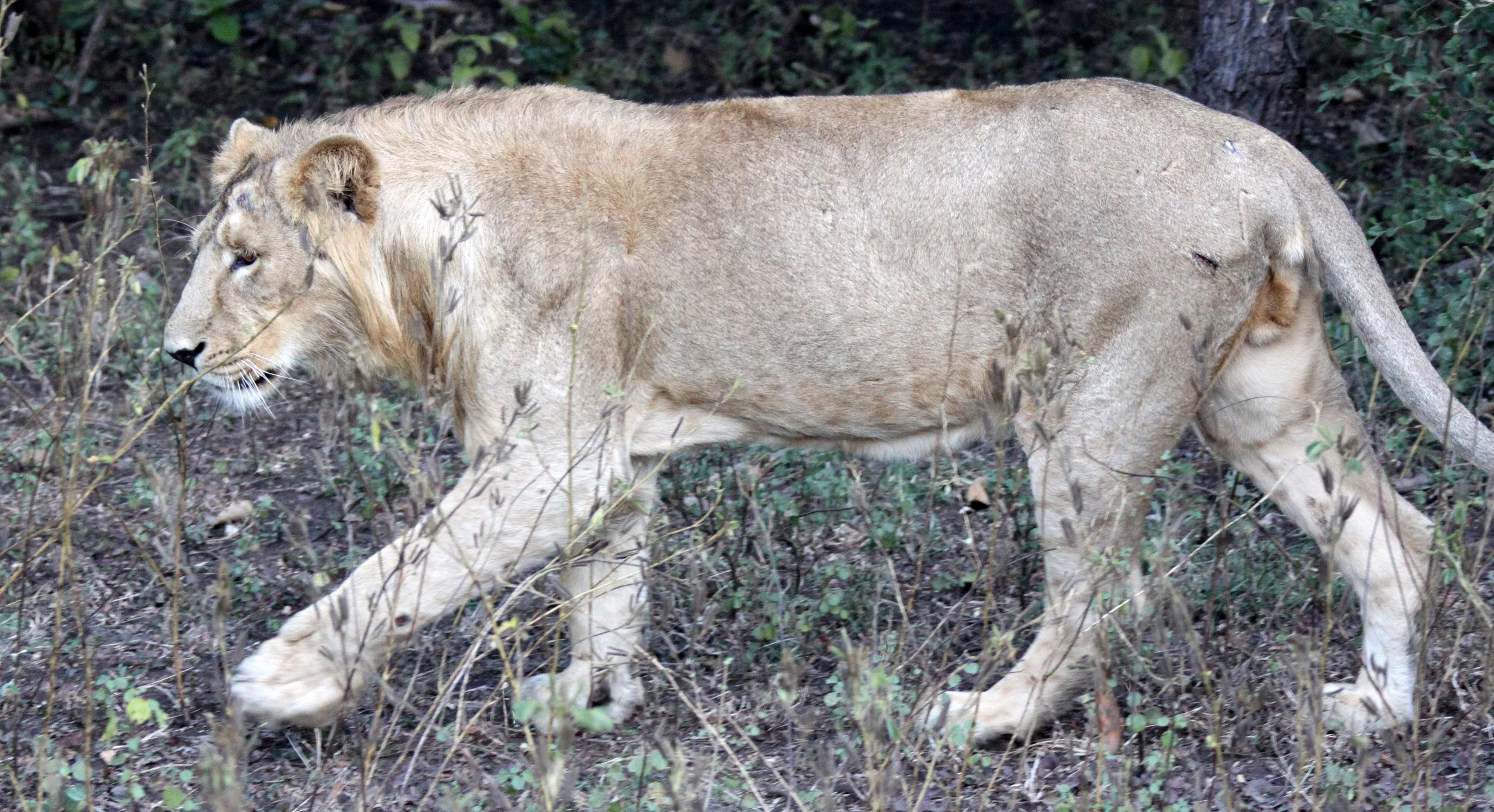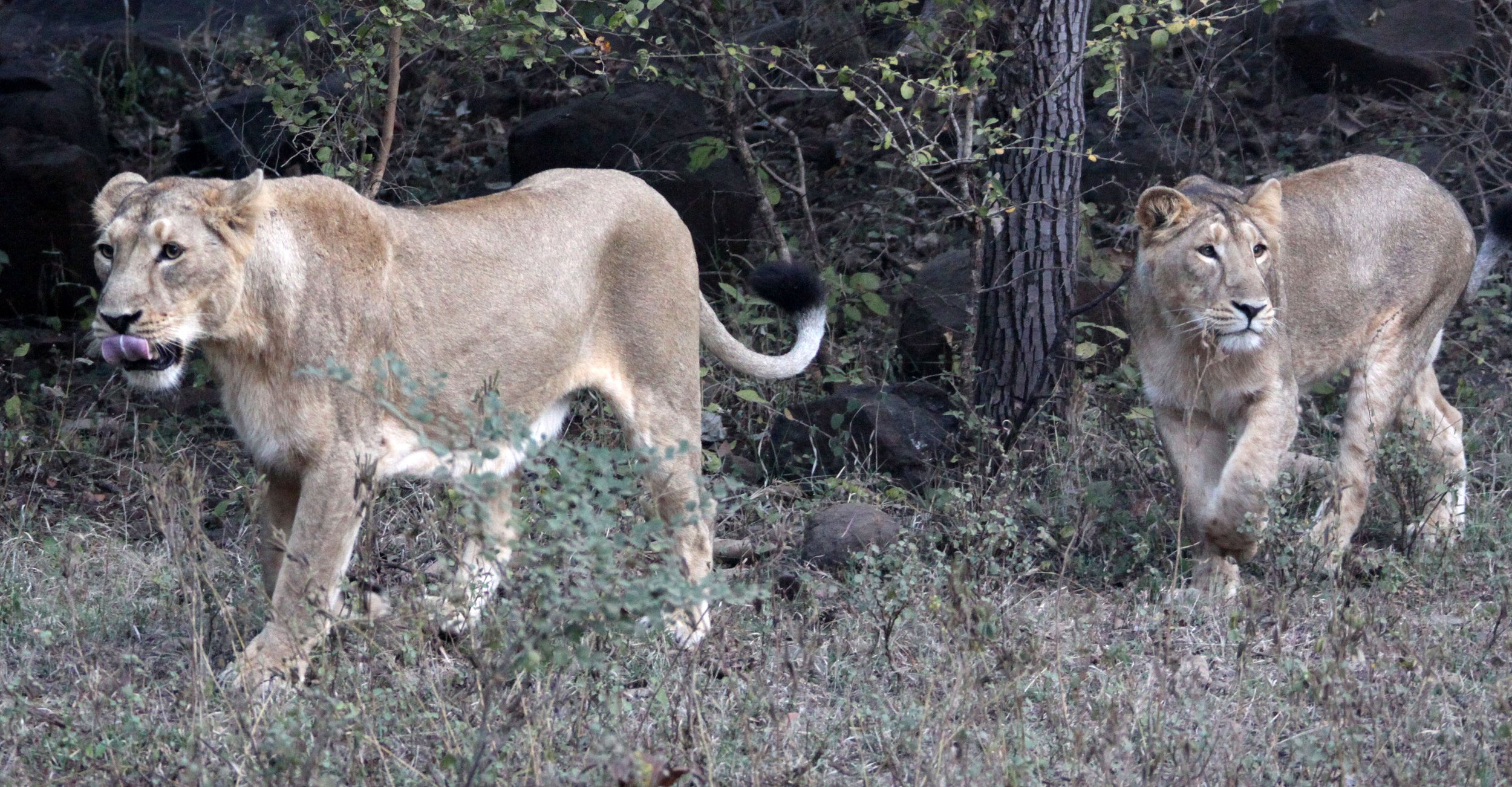
Panthera leo Lions
The lion (Panthera leo) is a large cat of the genus Panthera native to Africa and India. It has a muscular, broad-chested body, short, rounded head, round ears, and a hairy tuft at the end of its tail. It is sexually dimorphic; adult male lions are larger than females and have a prominent mane. It is a social species, forming groups called prides. A lion's pride consists of a few adult males, related females, and cubs. Groups of female lions usually hunt together, preying mostly on large ungulates. The lion is an apex and keystone predator; although some lions scavenge when opportunities occur and have been known to hunt humans, the species typically does not actively seek out and prey on humans.
The lion inhabits grasslands, savannas and shrublands. It is usually more diurnal than other wild cats, but when persecuted, it adapts to being active at night and at twilight. During the Neolithic period, the lion ranged throughout Africa, Southeast Europe, the Caucasus, Western Asia and northern parts of India, but it has been reduced to fragmented populations in sub-Saharan Africa and one population in western India. It has been listed as Vulnerable on the IUCN Red List since 1996 because populations in African countries have declined by about 43% since the early 1990s. Lion populations are untenable outside designated protected areas. Although the cause of the decline is not fully understood, habitat loss and conflicts with humans are the greatest causes for concern.
The below galleries are divided into subspecies. While currently there are only two subspecies officially recognized - the Asian Lion and the African Lion, I have created separate galleries following the older taxonomy to give a clearly idea of geographic variations that exists for the many locations I have seen Panthera leo in the wild in Africa.
African Lion (Panthera leo melanochaita) - seen in many locations in East and Southern Africa. The below gallery is a collection from Masai Mara, Kenya on multiple trips


















































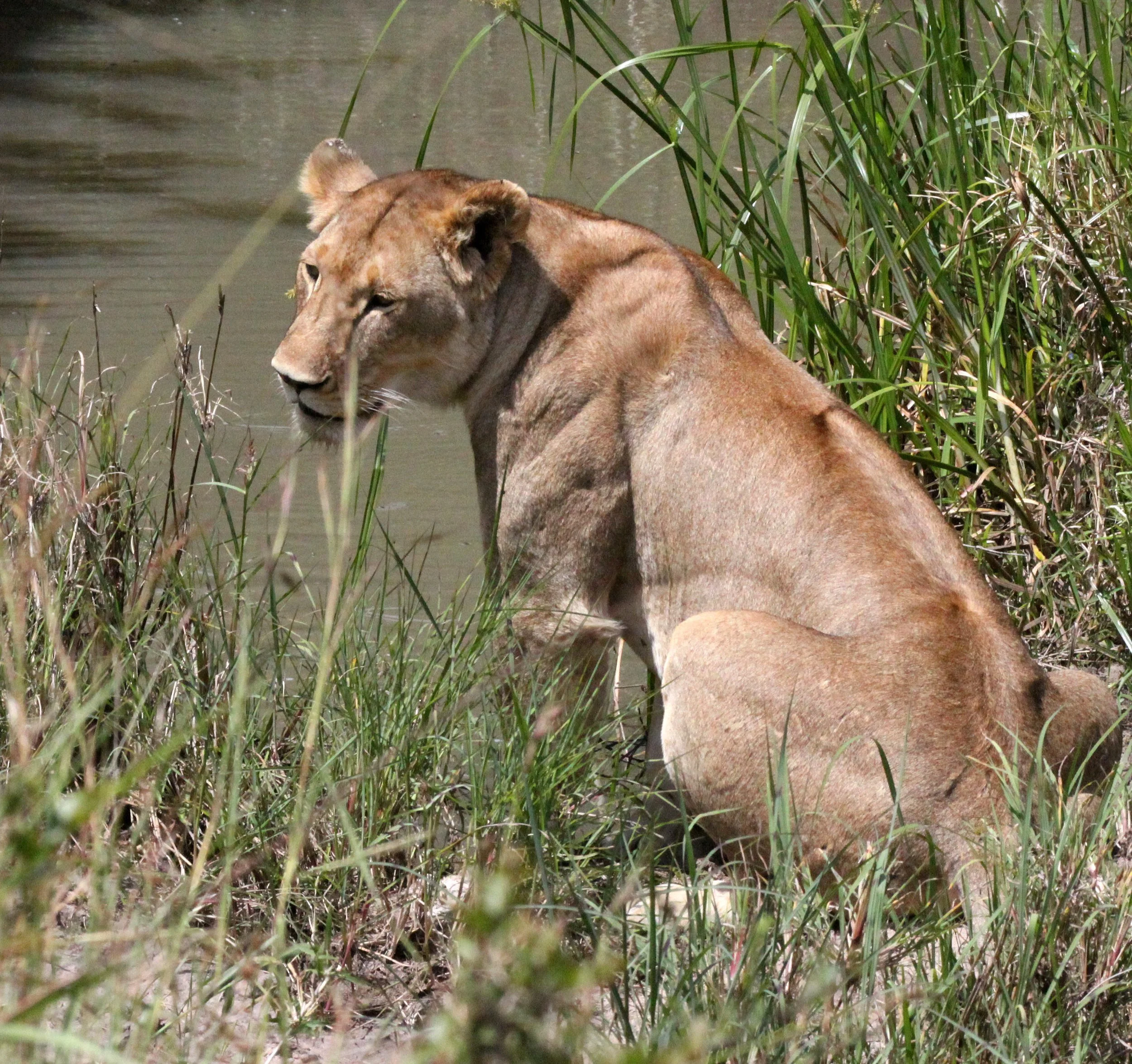





































































Below gallery is Panthera leo melanochaita from Masai Mara Kenya

































































The below gallery contains images of Panthera leo melanochaita from Southern Africa - Zimbabwe, South Africa. Kgalagadi National Park, Kruger National Park, Hwange National Park populations. The Kgalagadi population is also called the “Black-maned Lions”.
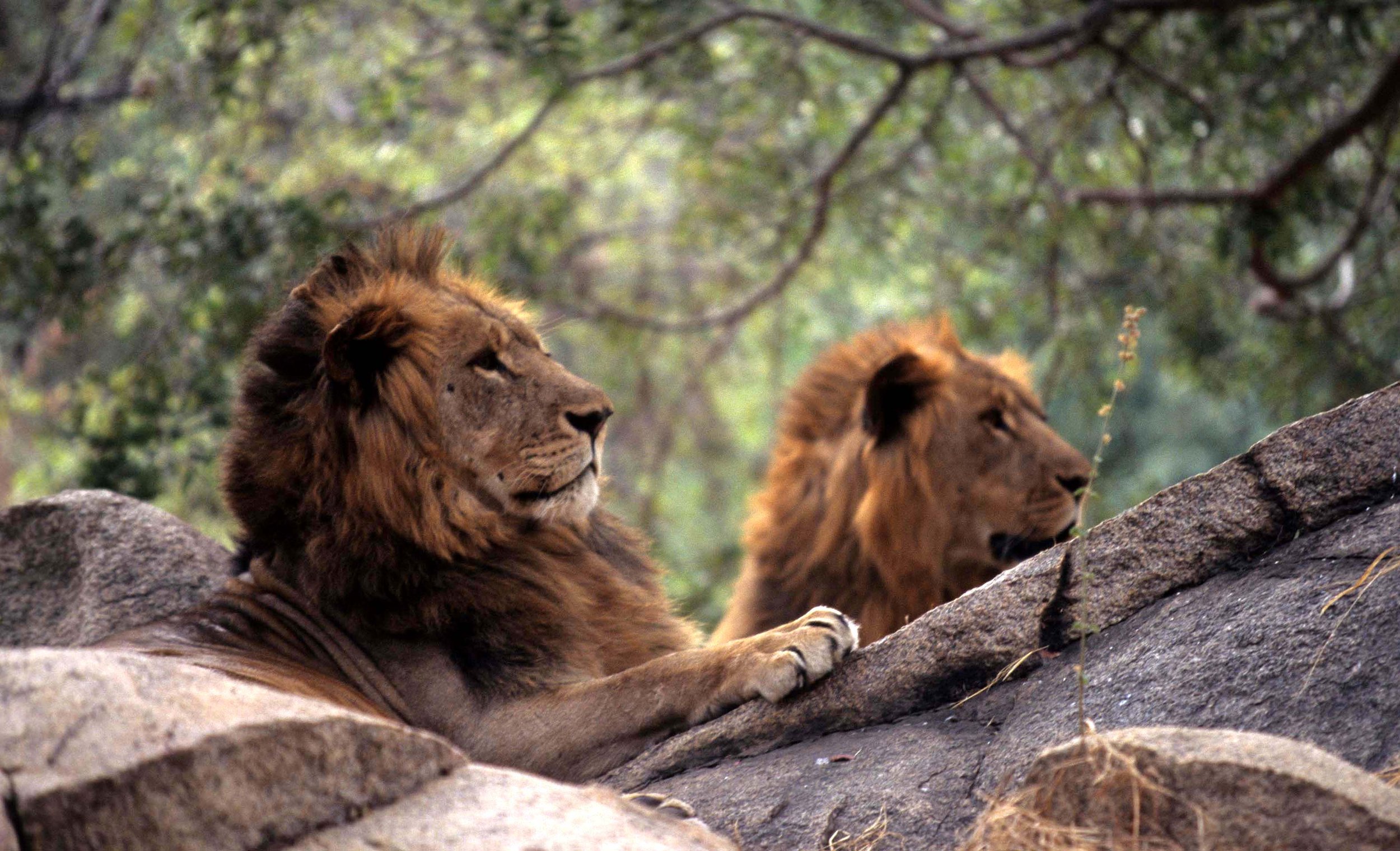


















































































































































The below gallery is Panthera leo melanochaita also from Kgalagadi













































































































The below gallery contains individuals that are also Panthera leo melanochaita. The below individuals are from the Etosha, Namibia population. Some consider these to be desert adapted lions, not to be confused with the “Desert Lions” of the Skeleton Coast and Naukluft regions.





















































































































































“Three Brothers” (Panthera leo melanochaita) Etosha National Park Namibia












































































































































Somali Clade African Lion (Panthera leo somaliensis) - north central Kenya in Shaba, Buffalo Springs Reserves






























Kruger Lion (Panthera leo krugeri) - an old synonym for P. l. melanochaita









Asiatic Lion (Panthera leo leo) - Sasan Gir Forest, Gujarat India. The only other accepted extant subspecies of Panthera leo.






















